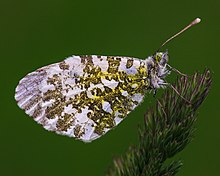
Camouflage is the use of any combination of materials, coloration, or illumination for concealment, either by making animals or objects hard to see, or by disguising them as something else. Examples include the leopard's spotted coat, the battledress of a modern soldier, and the leaf-mimic katydid's wings. A third approach, motion dazzle, confuses the observer with a conspicuous pattern, making the object visible but momentarily harder to locate, as well as making general aiming easier. The majority of camouflage methods aim for crypsis, often through a general resemblance to the background, high contrast disruptive coloration, eliminating shadow, and countershading. In the open ocean, where there is no background, the principal methods of camouflage are transparency, silvering, and countershading, while the ability to produce light is among other things used for counter-illumination on the undersides of cephalopods such as squid. Some animals, such as chameleons and octopuses, are capable of actively changing their skin pattern and colours, whether for camouflage or for signalling. It is possible that some plants use camouflage to evade being eaten by herbivores.
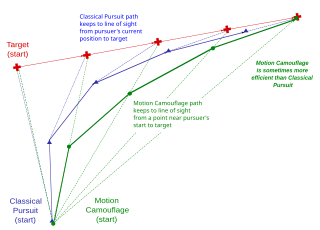
Motion camouflage is camouflage which provides a degree of concealment for a moving object, given that motion makes objects easy to detect however well their coloration matches their background or breaks up their outlines.

Hugh Bamford Cott was a British zoologist, an authority on both natural and military camouflage, and a scientific illustrator and photographer. Many of his field studies took place in Africa, where he was especially interested in the Nile crocodile, the evolution of pattern and colour in animals. During the Second World War, Cott worked as a camouflage expert for the British Army and helped to influence War Office policy on camouflage. His book Adaptive Coloration in Animals (1940), popular among serving soldiers, was the major textbook on camouflage in zoology of the twentieth century. After the war, he became a Fellow of Selwyn College, Cambridge. As a Fellow of the Zoological Society of London, he undertook expeditions to Africa and the Amazon to collect specimens, mainly reptiles and amphibians.
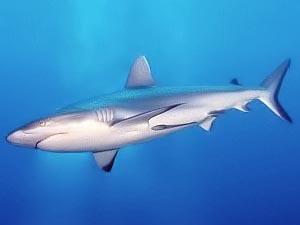
Countershading, or Thayer's law, is a method of camouflage in which an animal's coloration is darker on the top or upper side and lighter on the underside of the body. This pattern is found in many species of mammals, reptiles, birds, fish, and insects, both in predators and in prey.

Afrixalus fornasini is a species of frog in the family Hyperoliidae and is native to Africa. Its common name is Fornasini's spiny reed frog or the greater leaf-folding frog

Animal colouration is the general appearance of an animal resulting from the reflection or emission of light from its surfaces. Some animals are brightly coloured, while others are hard to see. In some species, such as the peafowl, the male has strong patterns, conspicuous colours and is iridescent, while the female is far less visible.

Cuttlefish, or cuttles, are marine molluscs of the order Sepiida. They belong to the class Cephalopoda which also includes squid, octopuses, and nautiluses. Cuttlefish have a unique internal shell, the cuttlebone, which is used for control of buoyancy.

Underwater camouflage is the set of methods of achieving crypsis—avoidance of observation—that allows otherwise visible aquatic organisms to remain unnoticed by other organisms such as predators or prey.

Disruptive coloration is a form of camouflage that works by breaking up the outlines of an animal, soldier or military vehicle with a strongly contrasting pattern. It is often combined with other methods of crypsis including background colour matching and countershading; special cases are coincident disruptive coloration and the disruptive eye mask seen in some fishes, amphibians, and reptiles. It appears paradoxical as a way of not being seen, since disruption of outlines depends on high contrast, so the patches of colour are themselves conspicuous.
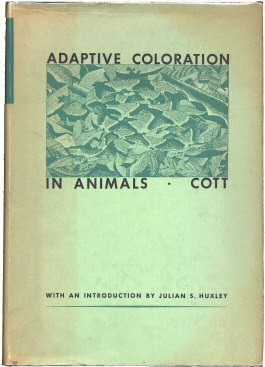
Adaptive Coloration in Animals is a 500-page textbook about camouflage, warning coloration and mimicry by the Cambridge zoologist Hugh Cott, first published during the Second World War in 1940; the book sold widely and made him famous.

Concealing-Coloration in the Animal Kingdom: An Exposition of the Laws of Disguise Through Color and Pattern; Being a Summary of Abbott H. Thayer’s Discoveries is a book published ostensibly by Gerald H. Thayer in 1909, and revised in 1918, but in fact a collaboration with and completion of his father Abbott Handerson Thayer's major work.

Deimatic behaviour or startle display means any pattern of bluffing behaviour in an animal that lacks strong defences, such as suddenly displaying conspicuous eyespots, to scare off or momentarily distract a predator, thus giving the prey animal an opportunity to escape. The term deimatic or dymantic originates from the Greek δειματόω (deimatóo), meaning "to frighten".

Animal Coloration, or in full Animal Coloration: An Account of the Principal Facts and Theories Relating to the Colours and Markings of Animals, is a book by the English zoologist Frank Evers Beddard, published by Swan Sonnenschein in 1892. It formed part of the ongoing debate amongst zoologists about the relevance of Charles Darwin's theory of natural selection to the observed appearance, structure, and behaviour of animals, and vice versa.

Multi-spectral camouflage is the use of counter-surveillance techniques to conceal objects from detection across several parts of the electromagnetic spectrum at the same time. While traditional military camouflage attempts to hide an object in the visible spectrum, multi-spectral camouflage also tries to simultaneously hide objects from detection methods such as infrared, radar, and millimetre-wave radar imaging.

Animal coloration provided important early evidence for evolution by natural selection, at a time when little direct evidence was available. Three major functions of coloration were discovered in the second half of the 19th century, and subsequently used as evidence of selection: camouflage ; mimicry, both Batesian and Müllerian; and aposematism.
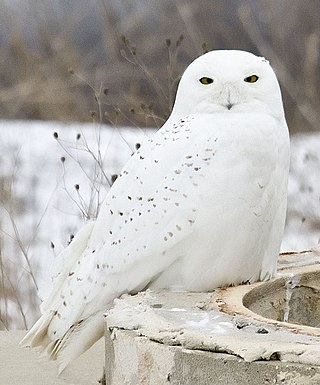
Distractive markings serve to camouflage animals or military vehicles by drawing the observer's attention away from the object as a whole, such as noticing its outline. This delays recognition. The markings necessarily have high contrast and are thus in themselves conspicuous. The mechanism therefore relies, as does camouflage as a whole, on deceiving the cognition of the observer, not in blending with the background.
Martin Stevens is a British sensory and evolutionary ecologist, an underwater photographer and a natural history and popular science writer. He is known for his work on disruptive coloration in animal camouflage.
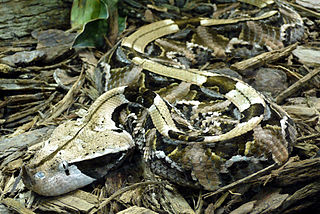
Disruptive eye masks are camouflage markings that conceal the eyes of an animal from its predators or prey. They are used by prey, to avoid being seen by predators, and by predators to help them approach their prey.
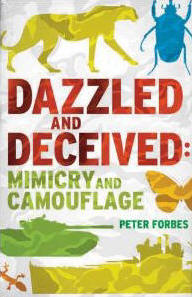
Dazzled and Deceived: Mimicry and Camouflage is a 2009 book on camouflage and mimicry, in nature and military usage, by the science writer and journalist Peter Forbes. It covers the history of these topics from the 19th century onwards, describing the discoveries of Henry Walter Bates, Alfred Russel Wallace and Fritz Müller, especially their studies of butterflies in the Amazon. The narrative also covers 20th-century military camouflage, begun by the painter Abbot Thayer who advocated disruptive coloration and countershading and continued in the First World War by the zoologist John Graham Kerr and the marine artist Norman Wilkinson, who developed dazzle camouflage. In the Second World War, the leading expert was Hugh Cott, who advised the British army on camouflage in the Western Desert.



